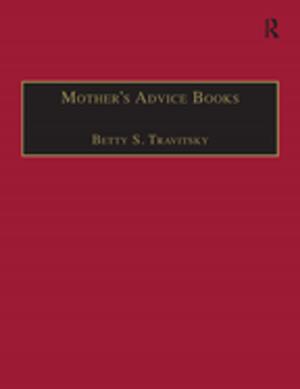From Archaeology to Spectacle in Victorian Britain
The Case of Assyria, 1845-1854
Nonfiction, History, World History| Author: | Shawn Malley | ISBN: | 9781317132516 |
| Publisher: | Taylor and Francis | Publication: | April 15, 2016 |
| Imprint: | Routledge | Language: | English |
| Author: | Shawn Malley |
| ISBN: | 9781317132516 |
| Publisher: | Taylor and Francis |
| Publication: | April 15, 2016 |
| Imprint: | Routledge |
| Language: | English |
In his examination of the excavation of ancient Assyria by Austen Henry Layard, Shawn Malley reveals how, by whom, and for what reasons the stones of Assyria were deployed during a brief but remarkably intense period of archaeological activity in the mid-nineteenth century. His book encompasses the archaeological practices and representations that originated in Layard's excavations, radiated outward by way of the British Museum and Layard's best-selling Nineveh and Its Remains (1849), and were then dispersed into the public domain of popular amusements. That the stones of Assyria resonated in debates far beyond the interests of religious and scientific groups is apparent in the prevalence of poetry, exhibitions, plays, and dioramas inspired by the excavation. Of particular note, correspondence involving high-ranking diplomatic personnel and museum officials demonstrates that the 'treasures' brought home to fill the British Museum served not only as signs of symbolic conquest, but also as covert means for extending Britain's political and economic influence in the Near East. Malley takes up issues of class and influence to show how the middle-class Layard's celebrity status both advanced and threatened aristocratic values. Tellingly, the excavations prompted disturbing questions about the perils of imperial rule that framed discussions of the social and political conditions which brought England to the brink of revolution in 1848 and resurfaced with a vengeance during the Crimean crisis. In the provocative conclusion of this meticulously documented and suggestive book, Malley points toward the striking parallels between the history of Britain's imperial investment in Mesopotamia and the contemporary geopolitical uses and abuses of Assyrian antiquity in post-invasion Iraq.
In his examination of the excavation of ancient Assyria by Austen Henry Layard, Shawn Malley reveals how, by whom, and for what reasons the stones of Assyria were deployed during a brief but remarkably intense period of archaeological activity in the mid-nineteenth century. His book encompasses the archaeological practices and representations that originated in Layard's excavations, radiated outward by way of the British Museum and Layard's best-selling Nineveh and Its Remains (1849), and were then dispersed into the public domain of popular amusements. That the stones of Assyria resonated in debates far beyond the interests of religious and scientific groups is apparent in the prevalence of poetry, exhibitions, plays, and dioramas inspired by the excavation. Of particular note, correspondence involving high-ranking diplomatic personnel and museum officials demonstrates that the 'treasures' brought home to fill the British Museum served not only as signs of symbolic conquest, but also as covert means for extending Britain's political and economic influence in the Near East. Malley takes up issues of class and influence to show how the middle-class Layard's celebrity status both advanced and threatened aristocratic values. Tellingly, the excavations prompted disturbing questions about the perils of imperial rule that framed discussions of the social and political conditions which brought England to the brink of revolution in 1848 and resurfaced with a vengeance during the Crimean crisis. In the provocative conclusion of this meticulously documented and suggestive book, Malley points toward the striking parallels between the history of Britain's imperial investment in Mesopotamia and the contemporary geopolitical uses and abuses of Assyrian antiquity in post-invasion Iraq.















